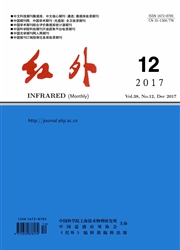

 中文摘要:
中文摘要:
通过用Shen等的方法对Terra/MODIS、FY-3A/MERSI、COMS/GOCI传感器入瞳处的辐射亮度即天顶辐射亮度进行反演计算,得出了遥感反射率Rrs与悬浮颗粒物(Suspended Particulate Matter, SPM)浓度的数据, 并将上述反演与Envisat/MERIS反演进行了对比。结果表明,MODIS、MERSI、GOCI 传感器的天顶辐射亮度与MERIS的线性相关性均较好;GOCI、MODIS与MERIS的Rrs一致,MERSI与MERIS 的Rrs相差较大,尤其在近红外区域。MODIS、MERSI和GOCI反演的SPM数据与MERIS反演的绝对偏差分别为36%、31%和26%。对于长江口、杭州湾及江苏沿岸的高浊度水体,3种传感器反演的SPM均与MERIS反演的SPM相近。对于离岸较远的低浊度水体,仅GOCI能很好地体现。
 英文摘要:
英文摘要:
Inverse calculation of top-of-atmosphere (TOA) radiation at the pupils of sensors onboard Terra/MODIS, FY-3A/MERSI, COMS/GOCI is carried out by using the method of Shen et al. The data on remote sensing reflectance (Rrs) and suspended particulate matter (SPM) concentration are estimated. They are compared with those derived from Envisat/MERIS. The results show that TOA radiation values obtained from MODIS, MERSI and GOCI sensors have a good linear relationship with that of MERIS. The Rrs values obtained from GOCI and MODIS are consistent with that obtained from MERIS. The Rrs value obtained from MERSI is quite different from that obtained from MERIS, particularly in the near infrared region. The absolute deviations of the SPM inverted by MODIS, MERSI and GOCI from that inverted by MERIS are 36%, 31% and 26% respectively. For the high turbid water around Tangtze Estury, Hangzhou Bay and Jiangsu coast, the SPM values inverted by above three sensors are all close to that inverted by MERIS. For the low turbidity water far from coast, only the data inverted by GOCI perform well.
 同期刊论文项目
同期刊论文项目
 同项目期刊论文
同项目期刊论文
 期刊信息
期刊信息
